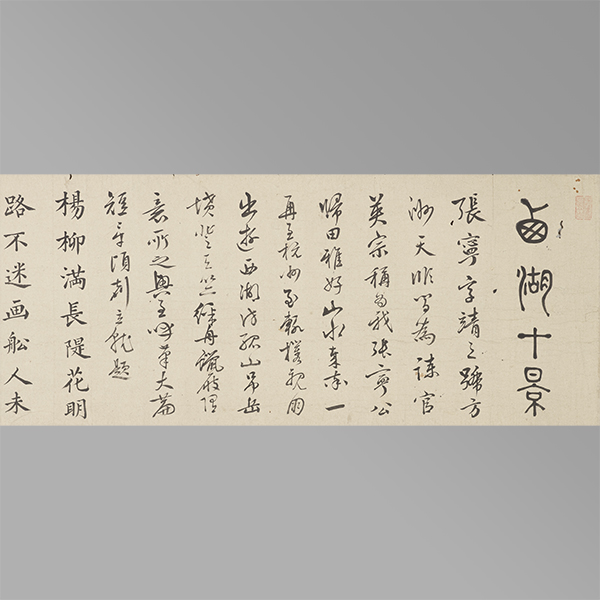Painting and Calligraphy | 16th–19th century
-

Ten Views of West Lake (detail), By Hosoi Kōtaku, Edo period, 1720
Japanese Gallery (Honkan) Room 8
April 11, 2023 (Tue) - May 28, 2023 (Sun)A thriving economy, foreign trade, and better education invigorated painting and calligraphy. Previously, ruling classes like the samurai and court nobility were the main patrons of art. But in the Edo period (1603–1868), more people started to benefit from the economy. Successful merchants in particular gained the wealth to support artists and buy their works.
Many painters continued working in traditional styles, while others started looking to outside sources for inspiration. Paintings and painting manuals imported from China were one source. Another was the books and prints that traders brought from Europe, which showed techniques like realistic shading and perspective. As a result, painting in Japan became more diverse in style and subject matter.
Meanwhile, the ancient custom of writing with a brush and ink continued. The literacy rate increased dramatically as schools for different social classes were established, particularly in cities and towns. The publishing industry thrived and more people took up the art of calligraphy.
| Designation | Name | Creation/ Excavation/ Provenance |
Period | Acquisition/ Ownership/ Accession Number |
CMT | ||
| Pine Tree, Plum Blossoms, and Crane | By Itō Jakuchū (1716–1800) | Edo period, 18th century | Gift of Ms. Uematsu Kayoko, A-11851 | ||||
| Highlight | Important Art Object | Monkeys Frolicking in Autumn Mountains | By Mori Sosen (1747–1821) | Edo period, 19th century | A-11725 | ||
| Highlight | Ten Views of West Lake | By Hosoi Kōtaku (1658–1735) | Edo period, 1720 | B-1022 | |||
| Ode to the Red Cliff | By Maki Ryōko (1777–1843) | Edo period, 1839 | Gift of Mr. Takeda Etsudō, B-3329 |
